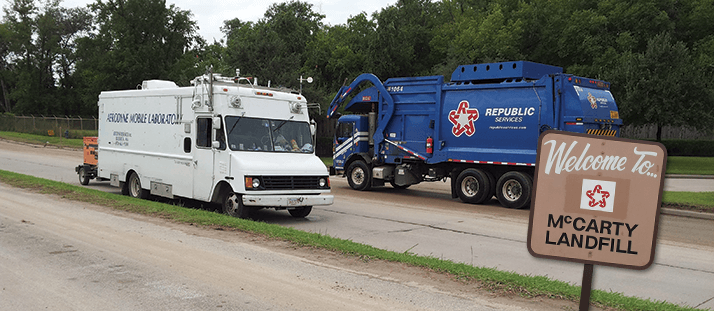
A landfill site in Houston, Texas is not the most glamorous of locations for academic research but that didn’t prevent a team from Rice University taking its new quartz-enhanced photoacoustic absorption spectroscopy (QEPAS) sensor out for a spin. The portable device was installed in the mobile laboratory as part of NASA’s DISCOVER-AQ campaign, which stands for Deriving Information on Surface Conditions from Column and Vertically Resolved Observations Relevant to Air Quality. QEPAS was able to detect methane at 13 parts per billion by volume (ppbv), reaching down to 6 ppbv for nitrous oxide in a one second acquisition time (1), findings that are comparable to much larger instruments currently used.
QEPAS makes use of a thumbnail-sized quantum cascade laser (QCL) whose beam is focused between two prongs of a millimetre-sized piezoelectric quartz tuning fork (QTF). In (very) simple terms, localized heating of molecules between the prongs at a certain wavelength generates an acoustic wave, which excites the QTF – the vibration produces a detectable voltage that is proportional to the concentration of the gas. Why the interest from DISCOVER-AQ in methane and nitrous oxide? The global warming effects of CH4 and N2O are 21- and 310-times greater than CO2, respectively (pound for pound on the 100-year global warming potential scale), according to the US Environmental Protection Agency.
Portable sensing equals better environmental control, allowing for improved monitoring of certain industries, such as agriculture, that are emitting both gases in increasing quantities. From a more short-term perspective, N2O exposure can decrease mental performance and manual dexterity (this is laughing gas after all) – given its use as a processing gas in medicine and aerospace, it would seem wise to monitor leaks. The team is now working on further miniaturization of the sensor and plans to install a smaller version on another mobile monitoring van that is carrying out a Rice/University of Houston survey of pollutants in the city. Apparently, the tuning fork costs no more than a dime; however, the cost of the continuous wave, thermoelectric cooled, distributed feedback quantum cascade laser is not mentioned.
References
- M. Jahjah et al., “A Compact QCL Based Methane and Nitrous Oxide Sensor for Environmental and Medical Applications”, The Analyst, advance article online (2014). DOI: 10.1039/C3AN01452E




